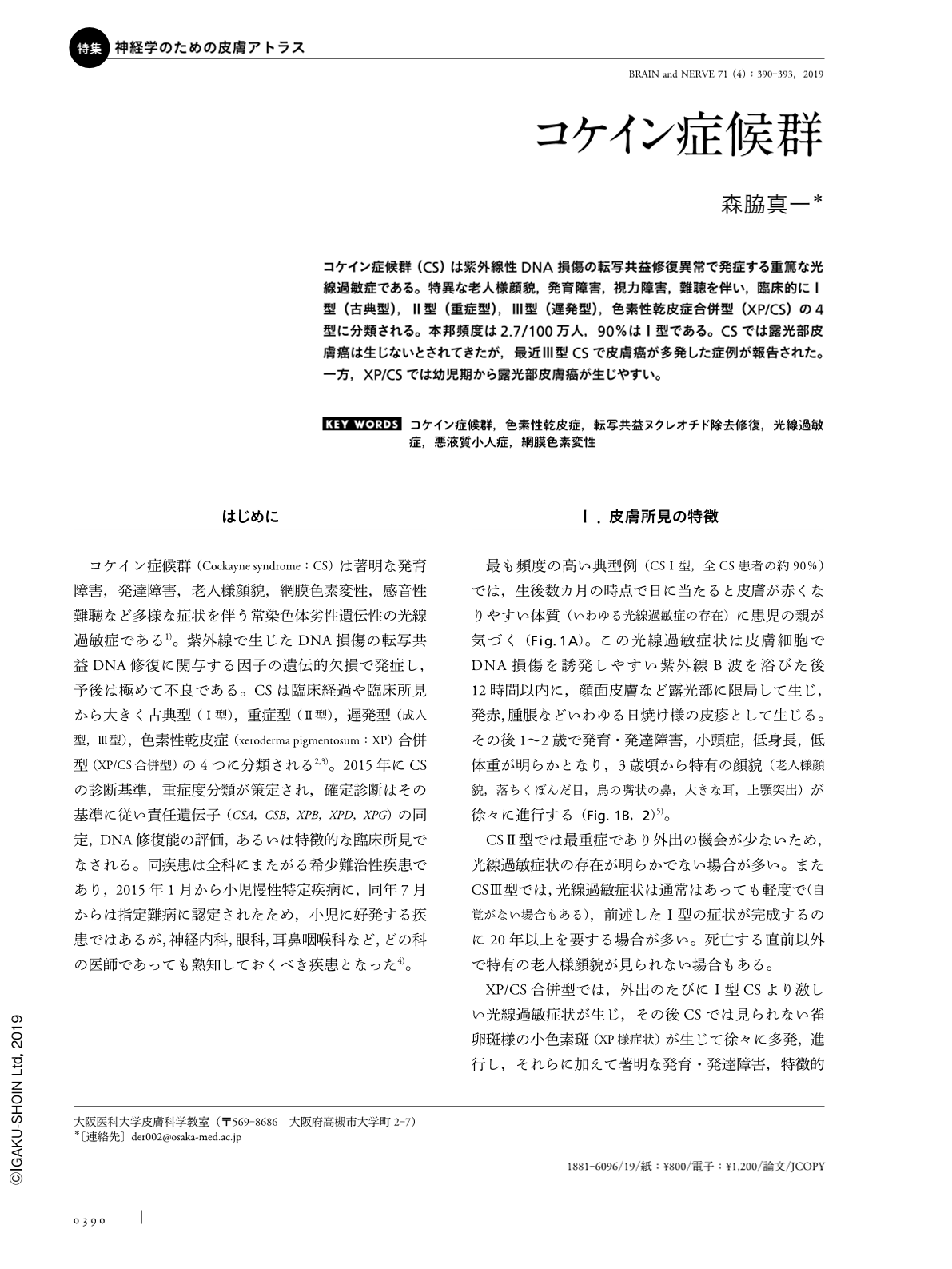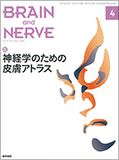Japanese
English
- 有料閲覧
- Abstract 文献概要
- 1ページ目 Look Inside
- 参考文献 Reference
コケイン症候群(CS)は紫外線性DNA損傷の転写共益修復異常で発症する重篤な光線過敏症である。特異な老人様顔貌,発育障害,視力障害,難聴を伴い,臨床的にⅠ型(古典型),Ⅱ型(重症型),Ⅲ型(遅発型),色素性乾皮症合併型(XP/CS)の4型に分類される。本邦頻度は2.7/100万人,90%はⅠ型である。CSでは露光部皮膚癌は生じないとされてきたが,最近Ⅲ型CSで皮膚癌が多発した症例が報告された。一方,XP/CSでは幼児期から露光部皮膚癌が生じやすい。
Abstract
Cockayne syndrome (CS) is an autosomal recessive disorder characterized by severe photosensitive genodermatosis that is associated with premature aging caused by defects in the UV-induced DNA damage repair system, particularly the transcription-coupled nucleotide excision repair. The clinical features of CS include photosensitivity, a characteristic senile face, significant developmental abnormalities, such as short stature, underweight, and microcephaly, progressive cachexia, severe visual impairment, and sensorineural deafness. CS is clinically classified into type I (classical type), type II (congenital or severe type) and type III (late-onset or adult-onset type). Additionally, there exists a rare form of xerodema pigmentosum-Cockayne syndrome (XP/CS) complex. The incidence of CS is 2.7 in 1,000,000 individuals in Japan and 90% of the cases are type I. Unlike XP, in CS, skin cancer is not known to occur in areas of skin exposed to sunlight. However, we observed a case where solar keratosis developed in adult-onset CS patients (CS type III) with a pathological mutation in the CSB gene. In XP/CS, patients easily develop skin cancer from early childhood in areas of the skin exposed to sunlight.

Copyright © 2019, Igaku-Shoin Ltd. All rights reserved.


